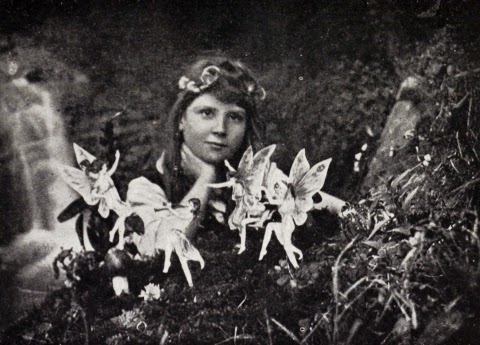Did
Fairies Exist in Sussex? Does it matter now?
The word ‘Fairies’ comes from the old French word ‘Faeries’. In
the time when the Saxons were in Sussex the word ‘Fairies’ was pronounced and
spelt ‘Pharisees’ (Parish & Hall, 1957); this is due to the old Sussex
dialect.
There are a number of different classifications for fairies. When we visualise fairies we think of them as small pixie type of creatures, tiny, mystical beings with wings. We also expect them to have some form of magical powers like ‘Tinkerbell’ from the story of ‘Peter Pan’. We do not expect them to be dark as ‘Maleficent’ from ‘Sleeping Beauty’ is portrayed. As a result this is what children today suspect a fairy to look and act like. On the contrary fairies have been around a lot longer than you might first expect. One of the earliest forms of fairies can be found in the mythical beings in Greek mythology such as nymphs. There are also the Norse version of fairies which are the elves and the Valkyries. Before William Shakespeare (1564-1616) wrote about fairies in his play ‘Midsummer Night’s Dream’ fairies had been spoken about by Chaucer (2012) in ‘The Canterbury Tales’ where he talked about fairies covering Britain before the time of King Arthur in the 5th and 6th century. This leads on to where we believe fairies originated in Yorkshire and were called the ‘Cottingley Fairies’ (www.sussexarch.org.uk), as seen below.
 |
| The Cottingley Fairies |
Fairies fall into stories of Folklore and there are a number
of such stories in Sussex, suggesting that at least the idea of fairies existed
in the area. A sight in Sussex known as ‘Harrows Hill’ is considered to be one
of the last places inhabited by fairies; a few other sights were known for having fairies as
inhabitants (www.sussexarch.org.uk). Fairies are
also known for not accepting gifts; many stories show farmers repaying fairies
for their work with presents. As soon as they receive any gifts they leave
abruptly and upset. The reason for this is still a mystery to us today.
Does it matter now whether fairies exist or not? Whether you believe in fairies or not there has been a wide range of historical writings about them and what they have done in the past. To this day there are still people out there believing that fairies exist still, and who are you or I to say they do not exist.
Do fairies have a place in education?
Educators have used well known fairy tales and applied them to ethical issues in student counseling (Henderson, Kathryn & Malone, 2012). The case studies viewed in Henderson et al. (2012) addressed topics such as the threat and harm to others, confidentiality, working with minors and a number of others. The fairy tales demonstrate ethical dilemmas that students can take away.
Does it matter now whether fairies exist or not? Whether you believe in fairies or not there has been a wide range of historical writings about them and what they have done in the past. To this day there are still people out there believing that fairies exist still, and who are you or I to say they do not exist.
Do fairies have a place in education?
Educators have used well known fairy tales and applied them to ethical issues in student counseling (Henderson, Kathryn & Malone, 2012). The case studies viewed in Henderson et al. (2012) addressed topics such as the threat and harm to others, confidentiality, working with minors and a number of others. The fairy tales demonstrate ethical dilemmas that students can take away.
References
Chaucer, G. (2012). The Canterbury Tales. london: The Floating Press. 239.
Henderson, Kathryn L. & Malone, S.L. (2012). Ethical Fairy Tales: Using Fairy Tales as Illustrative Ethical Dilemmas With Counseling Students. Journal of Creativity in Mental Health. 7, 65-82.
Henderson, Kathryn L. & Malone, S.L. (2012). Ethical Fairy Tales: Using Fairy Tales as Illustrative Ethical Dilemmas With Counseling Students. Journal of Creativity in Mental Health. 7, 65-82.
Joe, J. (2004). Origin of the Faeries. Available: http://www.timelessmyths.com/celtic/faeries.html. Last accessed 7th October 2014.
Parish, W.D. & Hall, H. (1957). A Dictionary of the Sussex Dialect. Lewes: Farncombe & Co. 31.
Simpson, J. & Roud, S. (2000). A Dictionary of English Folklore. Oxford: Oxford University Press. 286.
Staveley, D. (2014). Fairy Folklore. Available:
http://www.sussexarch.org.uk/saaf/fairies.html. Last accessed 7th October 2014.
I would love to know whether Seeley Copse is named after the Seelie Court of faeries...
ReplyDeleteBy the way, do faeries have a place in environmental education?
I couldn't find anything on why Seeley Copse was names that.
ReplyDelete